Rare Coins vs Bullion: Numismatics During Inflation - The Modern Advantage
Inflation—the persistent rise in prices that erodes purchasing power—is a pressing reality in today’s economy. As of March 19, 2025, with U.S. inflation at 6.2%, global supply chain strains intensifying, and central banks grappling with rising costs, investors need assets...
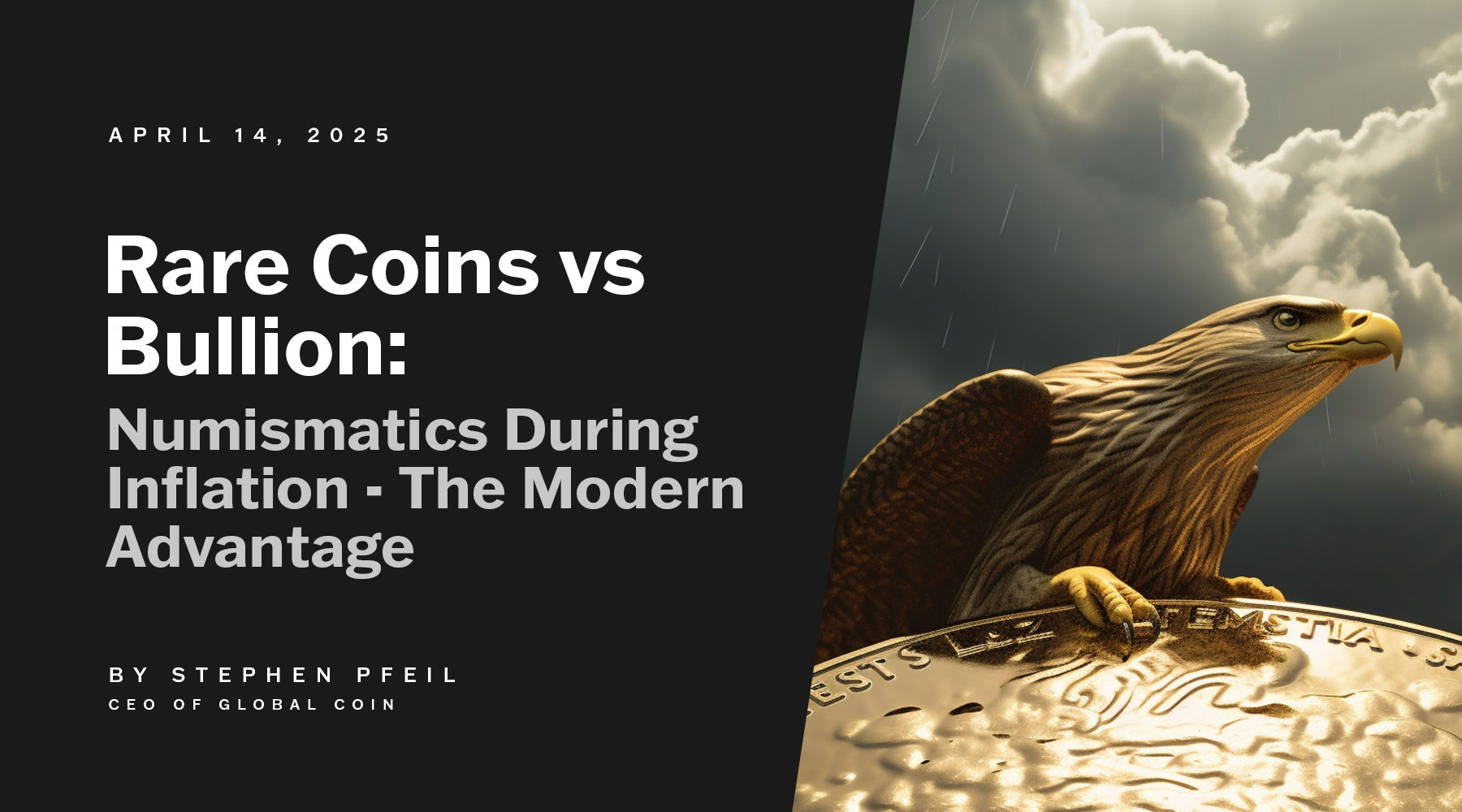
Inflation—the persistent rise in prices that erodes purchasing power—is a pressing reality in today’s economy. As of March 19, 2025, with U.S. inflation at 6.2%, global supply chain strains intensifying, and central banks grappling with rising costs, investors need assets that outpace this slow bleed. The mission? Safeguard and grow wealth when every dollar buys more gold and silver coins for less, leveraging both bullion and numismatic coins.

Two champions emerge: bullion (gold and silver valued for metal content) and modern numismatic coins (rare, collectible coins with global appeal, like the 1969 South African Krugerrand Proof or 2000 Australian Lunar Dragon). These rare coins aren’t local currency relics—they’re internationally recognized treasures blending metal value with scarcity-driven potential. At Global Coin, we offer high-net-worth investors exclusive access to billions in such inventory, fortifying portfolios against inflation’s toll. This post pits numismatics against bullion in today’s inflationary landscape—here’s your edge.
Understanding Coins and Bullion
Coins and bullion are two popular ways to invest in precious metals, each with its unique characteristics and benefits. Coins are minted by governments or private entities and can be made from various metals, including gold, silver, and platinum. These coins often carry a face value and can be used as legal tender, although their intrinsic value is usually much higher due to the precious metals they contain.
Bullion, on the other hand, refers to refined precious metals that are minted into coins or bars. The value of bullion is primarily determined by its weight and the current market price of the metal it’s composed of. For instance, gold bullion coins and silver bullion coins are valued based on the weight of gold or silver they contain, and their prices fluctuate according to the overall market value of these metals. This makes bullion a straightforward investment for those looking to hedge against inflation and economic uncertainty.
Inflation 101: The Quiet Wealth Eroder

Inflation—sustained price increases—quietly shrinks cash value. At 6.2% annually, $100 today buys $94 next year, $88 in two. Key drivers include:
-
Money Supply Expansion: Central banks print to stimulate growth, diluting currency.
-
Supply Chain Woes: Energy costs and shortages (e.g., 2025’s European crunch) push prices higher.
-
Demand Surge: Post-pandemic spending fuels the fire.
In this climate, tangible assets, precious metals like gold and silver stand out. Bullion offers a metal anchor, while modern numismatics add a collectible boost, often driven by their numismatic value. Let’s break it down.
Bullion vs. Modern Numismatics: The Gold and Silver Coins Contenders
-
Bullion: Gold bars, silver rounds, or coins like the 2025 American Gold Eagle—valued at spot prices (e.g., gold at $3,040/oz today). It’s a pure metal play, liquid and reliable.
-
Modern Numismatics: Post-1900 rarities like the 1997 American Eagle Proof or 2011 Canadian Maple Leaf Reverse Proof—worth combines metal content with scarcity, condition, and collector demand.
Here’s the comparison:
|
Feature |
Bullion Coins |
Modern Numismatic Coins |
|---|---|---|
|
Definition |
Valued by metal content (gold/silver) |
Valued by metal, rarity, demand |
|
Primary Value |
Spot price (e.g., $2,600/oz gold) |
Metal + collectible premium |
|
Volatility |
Tied to metal markets |
More stable, scarcity-driven |
|
Liquidity |
High (easily traded) |
Moderate (collector market) |
|
Inflation Edge |
Strong (metal hedge) |
Stronger (dual growth) |
Key Takeaway: Bullion stabilizes value; modern numismatics amplify gains.
Key Differences Between Bullion and Numismatic Coins
Bullion coins and numismatic coins serve distinct purposes and are valued differently. Bullion coins are prized for their metal content and are often used as a hedge against inflation or economic instability. These coins, such as gold bullion coins and silver bullion coins, are valued based on the current market price of the precious metals they contain. They are highly liquid and can be easily traded or sold.
Numismatic coins, also known as collectible coins, are valued for their rarity, historical significance, and condition. Unlike bullion coins, numismatic coins can appreciate in value over time due to their scarcity and demand from collectors. For example, a rare coin like the 1969 South African Krugerrand Proof can command a significant premium over its metal content due to its collectible value. Numismatic coin collectors often seek out these rare coins for their unique attributes and potential for long-term appreciation.
Inflation in 2025: The Current Challenge
Today’s inflationary pressures are undeniable:
-
U.S. CPI: 6.2%, outstripping savings returns and wage gains.
-
Global Factors: Energy shortages and geopolitical tensions (e.g., Eastern Europe) drive costs up.
-
Policy Lag: Central banks’ rate hikes trail, letting inflation simmer.
At 6.2%, $1M loses $62,000 in real value yearly—cash is bleeding. Bullion coins and numismatics offer a counterpunch, but how? Numismatic coins value is often driven by their rarity and collector demand.
Bullion During Inflation: The Precious Metals Anchor
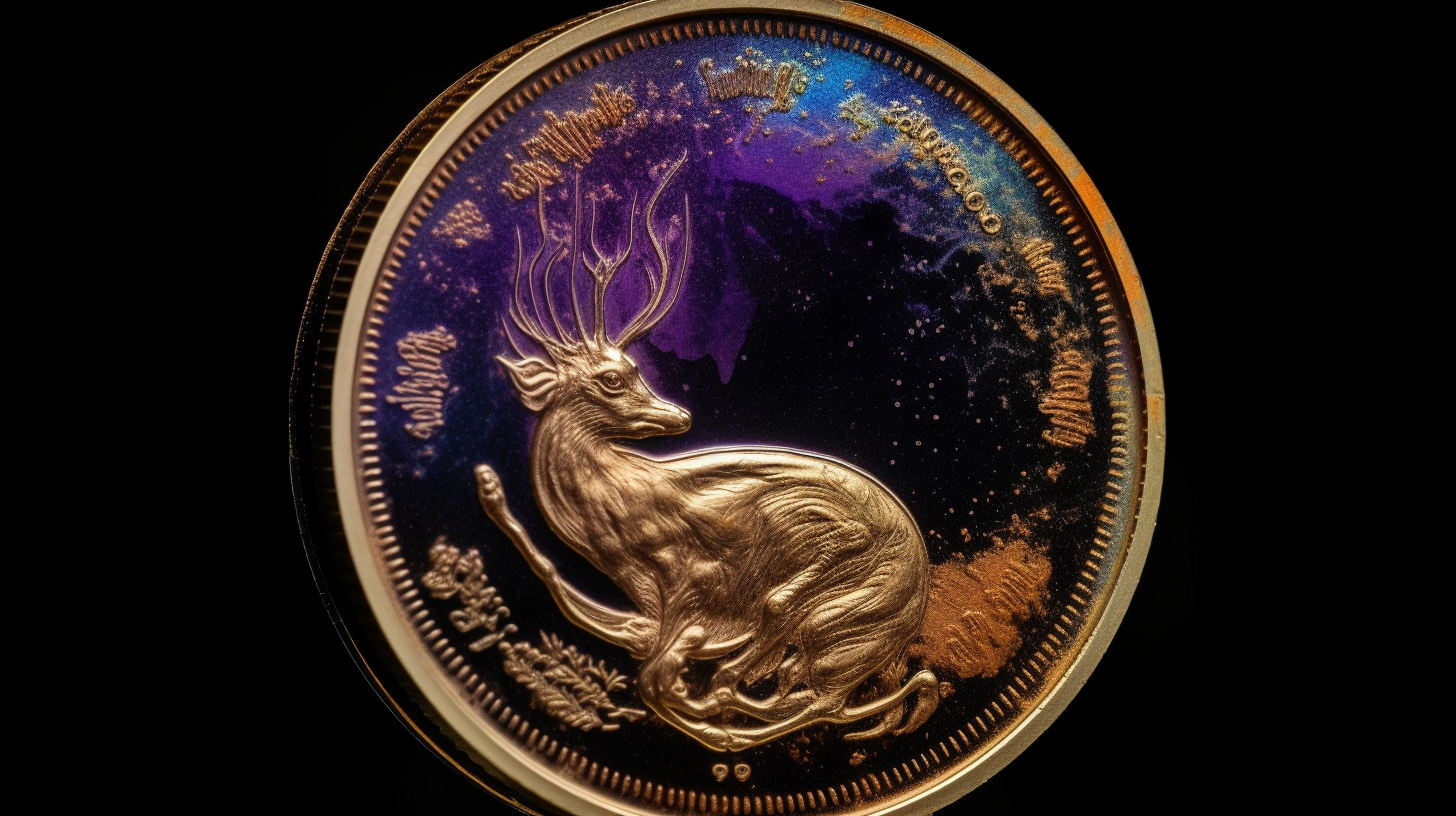
-
Strengths:
-
Intrinsic Value: Gold at $2,600/oz or silver at $32/oz tracks inflation, holding purchasing power.
-
Liquidity: Sell a 1 oz Gold Eagle fast to cover rising costs.
-
Proven Hedge: Gold rose 25% during 2021’s 7% CPI surge—a steady performer.
-
-
Weaknesses:
-
Market Volatility: ETFs and central banks can suppress spot prices short-term (e.g., gold’s 5% dip in 2023).
-
No Premium: Just metal value—no rarity upside.
-
Scenario: At 6.2% inflation, a $2,600 Gold Eagle keeps pace, climbing to $2,761 by 2026 if spot aligns—reliable, not remarkable.
Modern Numismatics During Inflation: The Numismatic Value Amplifier
-
Strengths:
-
Dual Value: Metal (e.g., $2,600 gold) plus a collectible premium—think a 2000 Lunar Dragon Proof at $1,500+ in MS-70.
-
Growth Potential: Scarcity drives gains beyond inflation (e.g., 1969 Krugerrand Proof up 15% yearly since 2020).
-
Stability: Less tied to volatile spot prices, more to collector demand.
-
Weaknesses:
-
Illiquidity: A $5,000 1997 Eagle Proof isn’t instant cash—rarity needs a market.
-
Expertise: Valuing premiums takes know-how; metal leads short-term.
-
Cost: High-grade rarities require more upfront, and those who buy numismatic coins often do so for personal enjoyment rather than purely for investment.
Scenario: At 6.2% inflation, a $5,500 1969 Krugerrand Proof’s metal holds ($2,600), while its numismatic face value, could rise 10% to $6,050 by 2026—beating inflation.
Market Dynamics and Resale Value
The market for coins and bullion is influenced by various factors, including supply and demand, global economic conditions, and investor sentiment. The resale value of bullion coins is primarily determined by the current market prices of the precious metals they contain. For instance, the value of a gold bullion coin will rise and fall with the price of gold, making it a direct play on the precious metal market.
Numismatic coins, on the other hand, have a more complex resale value. Factors such as rarity, condition, and historical significance play a significant role in determining their market value. A rare numismatic coin in pristine condition can fetch a much higher price than its bullion counterpart, driven by collector demand and the coin’s unique attributes. This makes numismatic coins a potentially lucrative investment for those who understand the market dynamics and can identify valuable pieces.
Bullion’s Inflation Vulnerability
-
Paper Gold Drag: ETFs like GLD ($60B in 2025) dilute physical demand, capping bullion’s climb. Holders get paper, not metal—a risk in volatile times.
-
Central Bank Influence: Gold sales temper prices—numismatics sidestep this with scarcity-driven value.
Head-to-Head: Inflation Face-Off
|
Factor |
Bullion Coins |
Modern Numismatic Coins |
|---|---|---|
|
Liquidity |
Higher |
Moderate |
|
Inflation Hedge |
Strong |
Stronger |
|
Price Manipulation Risk |
Higher (ETFs, banks) |
Minimal |
|
Value Beyond Metal |
None |
Yes |
Verdict: Bullion steadies your wealth; modern numismatics grow it faster.
Building a 2025 Inflation-Proof Portfolio

Combine both for the win:
-
Diversify:
-
50% bullion (2025 Gold Eagles, Silver Maples) for consistent value.
-
50% modern numismatics (e.g., 2011 Maple Leaf Reverse Proof) for growth.
-
-
Target Rarity:
-
Focus on post-1900 coins with low mintage, high grades (e.g., PCGS MS-70).
-
Top Picks: 1997 American Eagle Proof, 2000 Lunar Dragon.
-
-
Source Wisely:
-
Buy from Global Coin—authenticated, investment-grade coins beat counterfeits.
-
Store bullion in a home safe, numismatics in a climate-controlled vault with insurance.
-
2024 Case Studies:
-
Bullion: 2023 Gold Eagle—$3,040 spot, up 6.5% to $2,769 in 2024
-
Numismatics: 1969 Krugerrand Proof—$2,600 melt, $5,500 MS-70, up 10% to $6,050 (Heritage Auctions, 2024).
Building a Coin Collection
Building a coin collection requires strategy, knowledge, and connections. A solid foundation of knowledge is crucial for any collector or investor. Understanding the history, rarity, and market value of coins can help you make informed decisions and avoid costly mistakes. Joining coin-collecting forums and societies can provide valuable insights and access to a community of like-minded enthusiasts who share your passion for coins.
Establishing relationships with trusted coin dealers and auction houses can also provide several advantages. These connections can offer access to rare and valuable coins, expert advice, and opportunities to buy and sell coins in a reputable environment. Whether you are interested in bullion coins for their metal content or numismatic coins for their collectible value, building a well-rounded coin collection can be a rewarding and profitable endeavor.
Risks and Considerations
Collecting and investing in coins, whether numismatic or bullion, comes with its own set of challenges and considerations. Determining authenticity and condition is a major challenge in the world of numismatic coins. Counterfeits are a risk, especially with older and rarer coins, making it essential to work with reputable dealers or third-party grading services to ensure you are getting genuine pieces.
Market timing and liquidity are important considerations for bullion coin investors. Precious metal prices can fluctuate due to various global economic factors, and understanding these dynamics can help you make better investment decisions. Diversification is a key strategy for both numismatic collectors and bullion investors. By spreading your investments across different types of coins and precious metals, you can mitigate risks and enhance your portfolio’s resilience against market volatility.
In conclusion, whether you are drawn to the intrinsic value of bullion coins or the collectible allure of numismatic coins, understanding the risks and considerations involved is crucial for successful investing and collecting.
Conclusion: Outsmart Inflation Today
Inflation’s 6.2% grip in 2025 won’t relent—bullion keeps your wealth steady, modern numismatics drive it higher. Together, they’re your inflation-beating powerhouse.
At Global Coin, we specialize in exclusive, investment-grade modern numismatics, coins and bullion—assets that outrun rising prices and sidestep manipulation. Contact us today to build a portfolio that thrives. Don’t let inflation erode your future—act now.
Related Articles
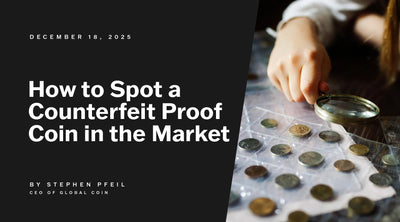
How to Spot a Counterfeit Proof Coin in the Market
How to Spot a Counterfeit Proof Coin in the Market In the world of numismatics, few things hold ...
Discover More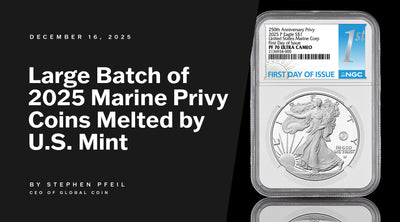
BREAKING NUMISMATIC NEWS: Large batch of 2025 Marine Privy Coins MELTED by U.S. Mint
BREAKING NUMISMATIC NEWS: Large batch of 2025 Marine Privy Coins MELTED by U.S. Mint A historic ...
Discover More
Tax Implications When You Sell Gold Bullion in Different States
Disclaimer: The following content is for informational purposes only and should not be construed ...
Discover More

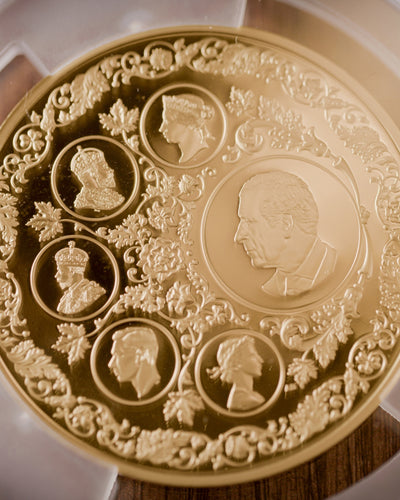
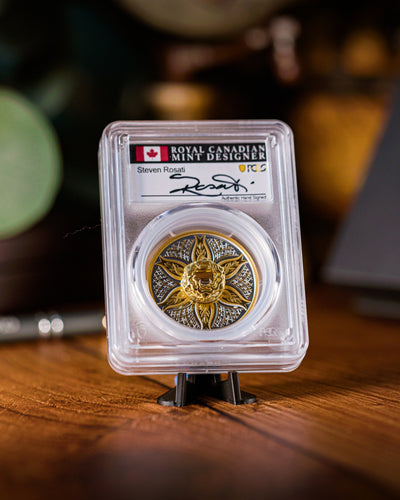
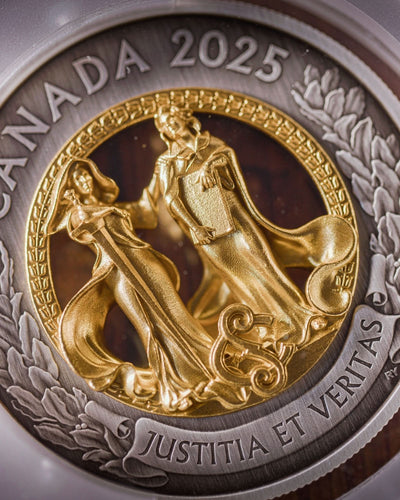
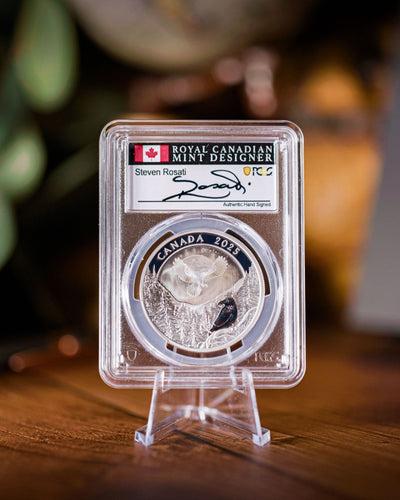
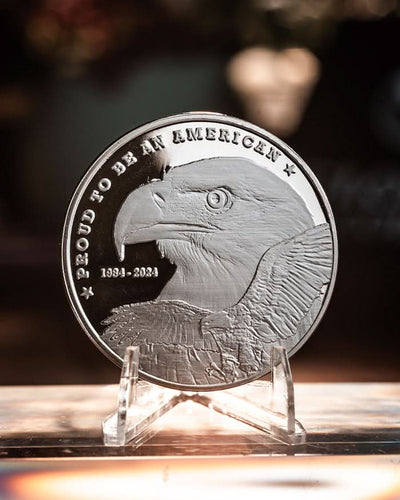
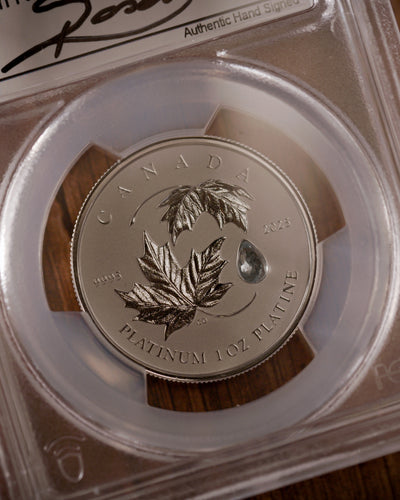
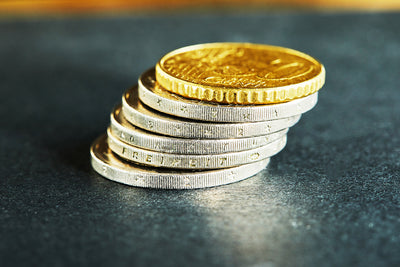
Leave a comment
This site is protected by hCaptcha and the hCaptcha Privacy Policy and Terms of Service apply.